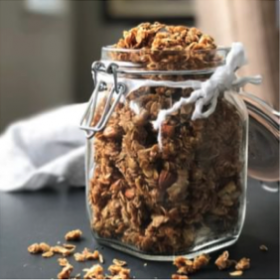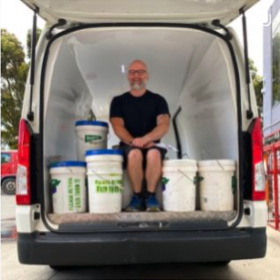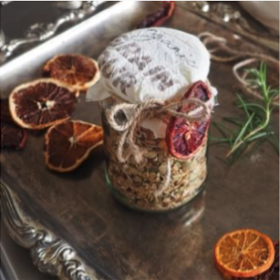Ingredients
Quinces - as many as you have or can fit into your biggest pot or slow cooker, whole and covered with water
Sugar - Roughly 3/4 of the weight of the quinces you are using
eg. 2kg fruit will need at least 1.5kg sugar
Optional - place a vanilla pod and its seeds (scraped out with a knife) into the simmering pot
Summary
Everyone wants quince paste on their cheeseboard. With time, heat and sugar, you can transform autumn’s strange offering into a cheese board dream, and enjoy it with the satisfaction that comes from making something yourself you might otherwise buy. It’s a long, slightly messy but easy process, so if time is on your side try a batch of quince paste. It might be the alternative passata-making tradition for you. And it’s delicious.
Here’s the basic situation: weigh the quinces, rub off any fur on the skin and cook the quinces whole (takes a few hours), core and purée them, simmer and reduce with sugar (another few hours), pour the paste into a tray and leave for a day to set. Quince paste! Eat liberally with a good manchego or stinky blue cheese, and perhaps a nice glass of red.
Quince Paste
So, the easiest way to cook up the quinces is probably with a slow cooker. Leave them whole, cover with water and cook overnight. Without such an appliance, just poach them on the stove for a couple of hours. Slow cooking the quinces whole will help to maximise the pectin in the purée, which will set the paste. Pectin levels also reduce as the fruits ripen and become more yellow, so choose your greenest fruit for this.
The next day, when they are cooled, you can easily peel the skin away with your fingers and core them. (If you’ve cooked up extra, why not keep a portion aside in the freezer to add to other meals like fruit crumbles or porridge or apple cake or compotes). Now that they’re cooked, you need another few hours of stove hover time. Blend the fruit into a purée and gently heat in your most generous pot. Add the sugar – roughly 3/4 of the weight of the original quinces, or thereabouts, and simmer on the lowest hob for 2-3 hours. Let it reduce as it bubbles away, becoming thicker and gloriously red. You’ll need to stir it occasionally, and skim off any scum that appears at the surface. Just be careful as it can spit a bit, keep it on very low.
At some point, after several hours, it’ll be past the jam stage and the whole hot purée will be thick and start coming away from the sides. Though a runnier version will still taste fantastic as a jam or syrup over ice cream, you can’t beat those nice gift-giving slabs so keep going if you can – until it becomes as thick as you can manage.
Line a shallow tray with baking paper, and pour the hot mess of it into the tray. Leave it for a day, then cut into sections once it has set. If you’re not convinced it will actually set firmly, pour into small gift-able jars or ramekins.




What to say, but it’s perfect, cheese and jam!!
but for me the best is sheep cheese and jam of figs !!
but this is so delicious
Thanks for the recipe. I pushed most of the mix through a sieve for a smoother pate. A question though- mine isn’t red in colour, it actually looks more like caramel colour. What’s gone wrong?
Our pleasure Jane! Hope it’s deliciously enjoyable and well done, the smoother texture is next level. Perhaps the more caramel colour is due to a different variety of quince, we’re not sure. If you find out from a quince paste expert let us know!
Just made this today, my Mum had soo many Quinces so I bit tbe bullet and gave it a shot, this worked a treat! Though its on my ceiling lmao!!
Also I used 2kgs is made ALOT can I freeze the paste? How long does it last cut up?
Hey Alison, hard to say but quince paste has been known to keep in the back the fridge FOR A VERY LONG TIME. Wrap well in segments, you might still be enjoying it before next year’s batch takes over.